The Art of Crafting a Nourishing Morinda Root and Rehmannia Root Soup: A Comprehensive Guide to Traditional Chinese Herbal Stewing**
In the realm of traditional Chinese herbal cuisine, few dishes embody the balance of flavor and wellness quite like a carefully crafted soup infused with Morinda Root (Ba Ji) and Rehmannia Root (Shu Di). These two herbs, revered for their medicinal properties, form the backbone of a broth that not only delights the palate but also nourishes the body and spirit. This article delves into the intricacies of preparing this timeless elixir, exploring the history, benefits, and precise techniques required to achieve a harmonious blend of taste and health.
The Significance of Morinda Root and Rehmannia Root in Chinese Medicine
Morinda Root (Morinda officinalis), commonly known as Ba Ji, has been a cornerstone of traditional Chinese medicine (TCM) for centuries. Renowned for its warming properties, it is believed to invigorate the kidneys, strengthen bones, and alleviate discomfort associated with joint stiffness. In TCM philosophy, the kidneys are considered the “root of life,” governing growth, development, and reproductive health. Ba Ji’s ability to tonify kidney yang energy makes it a prized ingredient for those seeking vitality and resilience.
Rehmannia Root (Rehmannia glutinosa), or Shu Di, represents the steamed and dried counterpart of the raw herb (Sheng Di). This processing method enhances its nourishing qualities, transforming it into a potent tonic for the blood and yin energy. Yin deficiency, characterized by symptoms like dryness, fatigue, and heat sensations, is addressed by Shu Di’s sweet and slightly cooling nature. Together, Ba Ji and Shu Di create a dynamic duo: one warming and invigorating, the other cooling and replenishing.
Selecting High-Quality Ingredients
The foundation of any exceptional soup lies in the quality of its components. When sourcing Morinda Root and Rehmannia Root, prioritize reputable herbal suppliers or trusted TCM pharmacies. Authentic Ba Ji should be firm, dark brown, and devoid of mold or discoloration. Shu Di, processed to a deep black hue, should emit a mild, earthy aroma without a musty undertone.
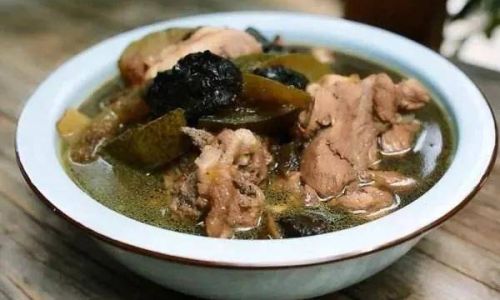
Complementary ingredients play a pivotal role in elevating the soup’s flavor and efficacy. Opt for premium proteins such as free-range chicken, grass-fed beef, or lean pork, as their rich collagen content enhances the broth’s body. For a vegetarian adaptation, consider mushrooms like shiitake or maitake, which impart umami depth. Additional herbs like goji berries, astragalus, or codonopsis can amplify the soup’s tonic effects, while aromatic vegetables such as ginger, garlic, and scallions add layers of complexity.
Preparation: The Alchemy of Stewing
-
Cleaning and Soaking the Herbs:
Begin by rinsing the herbs under cool water to remove any residual dirt. Place the Morinda Root and Rehmannia Root in separate bowls and cover them with filtered water. Allow them to soak for at least 30 minutes; this softens the roots, reducing cooking time and ensuring even extraction of nutrients. -
Preparing the Protein Base:
If using meat, parboil it to eliminate impurities. Submerge the protein in a pot of cold water, bring to a rolling boil, and simmer for 5–7 minutes. Drain and rinse under cold water to halt cooking. This step clarifies the broth and prevents scum formation.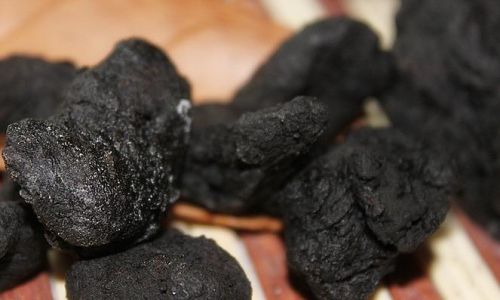
-
Assembling the Broth:
In a large stockpot, combine the parboiled meat, soaked herbs, and any additional ingredients. Add aromatics like sliced ginger (2–3 inches) and a whole garlic bulb, halved. Pour in 8–10 cups of cold water, ensuring all ingredients are submerged. -
Simmering Techniques:
Bring the pot to a gentle simmer over medium-low heat. Skim off any foam that rises to the surface. Once the broth is clear, reduce the heat to low, cover partially, and allow it to steep. The stewing time varies: 2–3 hours for meat-based soups, 1.5–2 hours for poultry, and 45–60 minutes for vegetarian versions. Longer cooking intensifies the herbal flavors and collagen breakdown.
Enhancing Flavor and Efficacy
-
Balancing Flavors:
TCM emphasizes the harmony of the five tastes: sweet, salty, sour, bitter, and pungent. To achieve equilibrium, introduce a pinch of sea salt during the final 15 minutes of cooking. A drizzle of sesame oil or a splash of rice wine just before serving adds a subtle aromatic lift.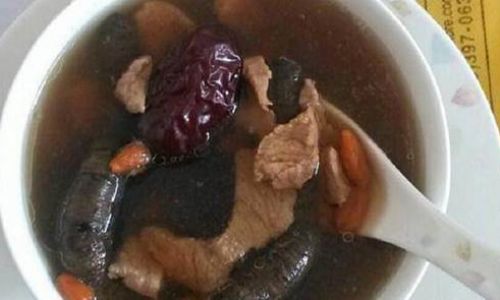
-
Seasonal Adaptations:
Adjust the recipe according to seasonal needs. In colder months, increase the Morinda Root ratio to enhance warmth. During warmer seasons, add cooling herbs like chrysanthemum flowers or mint leaves to offset Shu Di’s richness. -
Textural Contrasts:
For a luxurious mouthfeel, incorporate ingredients like lotus seeds, job’s tears, or black fungus during the last hour of cooking. These additions provide chewy textures and absorb the broth’s essence.
Common Pitfalls and How to Avoid Them
- Overcooking Herbs: Extended boiling may render the broth bitter. Adhere to recommended cooking times and remove herbs if bitterness emerges.
- Insufficient Skimming: Neglecting to skim foam results in a cloudy broth. Regular skimming during the initial simmer ensures clarity.
- Improper Herb Ratios: An imbalance between Ba Ji and Shu Di can disrupt the soup’s energetic profile. Aim for a 2:1 ratio of Shu Di to Ba Ji for general tonification.
Nutritional and Medicinal Benefits
This soup offers a spectrum of health advantages:
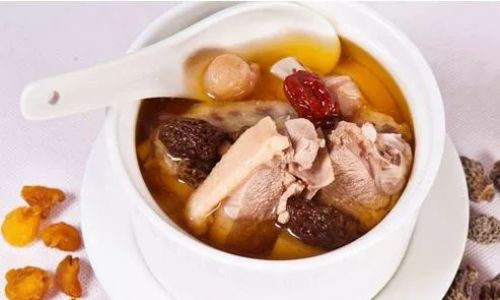
- Joint Health: Ba Ji’s anti-inflammatory properties may alleviate arthritis symptoms.
- Blood Nourishment: Shu Di’s iron and vitamin content supports hemoglobin production.
- Immune Boost: Synergistic herbs like astragalus enhance white blood cell activity.
- Stress Reduction: Adaptogenic herbs aid in cortisol regulation, promoting mental calm.
Cultural Context and Serving Suggestions
In Chinese households, this soup is often consumed during convalescence, seasonal transitions, or as a preventive measure against fatigue. Serve it hot, accompanied by steamed rice or glutinous rice balls. For a festive touch, garnish with fresh cilantro or thinly sliced red chilies.
Storage and Reheating
Leftover soup can be refrigerated for up to three days or frozen for a month. Reheat gently to preserve flavors, avoiding vigorous boiling which may degrade delicate compounds.
Safety Considerations and Contraindications
While generally safe, certain individuals should exercise caution:
- Pregnant Women: Consult a TCM practitioner before consuming herbal soups.
- Diabetics: Shu Di’s natural sugars may affect blood glucose levels.
- Digestive Sensitivity: Excessive Ba Ji may cause bloating; reduce the quantity if discomfort arises.
Conclusion
The art of stewing Morinda Root and Rehmannia Root soup transcends mere cooking—it is an act of cultural preservation and holistic wellness. By meticulously selecting ingredients, respecting traditional techniques, and adapting the recipe to individual needs, one can harness the synergy of these herbs to create a dish that nourishes body and soul alike. Whether sought for its medicinal depth or its comforting embrace, this soup remains a testament to the enduring wisdom of Chinese herbal traditions.
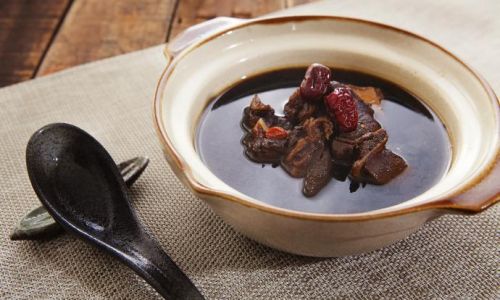
Final Note: Always consult a healthcare professional before incorporating herbal remedies into your diet, especially if you have preexisting conditions or are taking medications. Herbal wisdom, when approached with respect and knowledge, becomes a bridge to enduring health.


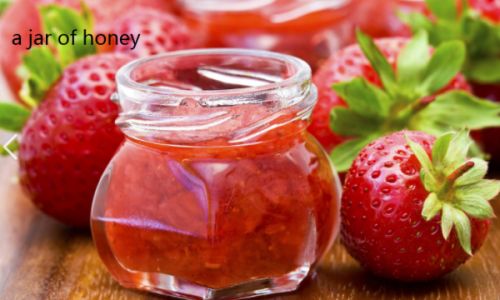
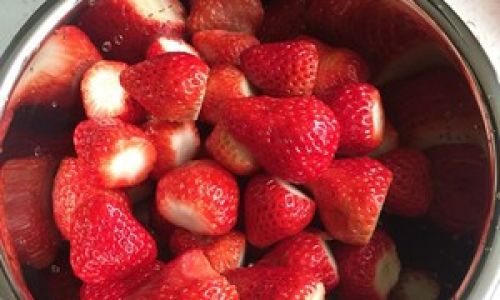

0 comments